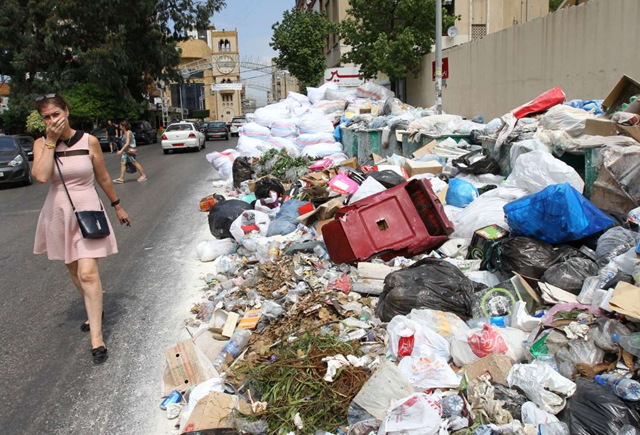Photo gallery: Beirut drowning in garbage
By Joseph Eid
28 September 2016 Beirut (AFP) – “Good morning! I’m an AFP photographer. Would it be alright to use your roof to take pictures of the garbage mountain in front of your building?” “Welcome, welcome my dear, come in. Would you like some coffee? I can give you a full interview if you want. Will your pictures show how bad the smell is?” Since Lebanon’s trash crisis began last July, I have asked this question dozens — perhaps hundreds — of times. I am greeted with the same enthusiasm each time, with residents eagerly ushering me onto their rooftops or near their windows to snap pictures of the piles of rubbish lining Lebanon’s roads. After several rounds of government deals on the issue, we thought the waste crisis had been brought under control. But over the past month, piles of garbage have once again invaded our streets and neighbourhoods, from Lebanon’s rocky mountains to the capital’s busy streets. My 40 kilometre commute to work takes me from the beautiful coastal town of Byblos along the seaside highway to Beirut. Day by day, as I drive this route, I notice garbage accumulate along both sides of the highway, near exit roads that lead into residential neighbourhoods, and under huge concrete bridges.
After several rounds of government deals on the issue, we thought the waste crisis had been brought under control. But over the past month, piles of garbage have once again invaded our streets and neighbourhoods, from Lebanon’s rocky mountains to the capital’s busy streets.
My 40 kilometre commute to work takes me from the beautiful coastal town of Byblos along the seaside highway to Beirut. Day by day, as I drive this route, I notice garbage accumulate along both sides of the highway, near exit roads that lead into residential neighbourhoods, and under huge concrete bridges. While driving to Beirut one morning, I noticed a giant cloud of smoke several kilometres away. I veered off the road to track down where it was coming from. It was a massive construction pit filled to the brim with flaming rubbish. I immediately began snapping photos, as two firefighters emerged from the smoke, calling for backup as they had run out of water to extinguish the fire. It looked like a disaster movie — except that joggers and people walking their pets just strolled by, completely unfazed by the gruesome scene unfolding before them. It seemed surreal — are they drugged? I thought. More likely, the situation has become so commonplace that they’ve become numb to the heaps of trash around them. The following day, I saw a river of garbage — bags piled up on a bridge that serves as one of the main thoroughfares into Beirut. The only way to capture a telling picture would be from an elevated position, so I began making the rounds in nearby buildings to find a suitable lookout point. The smell was overwhelming — I couldn’t imagine how anyone was living this close to such a putrid monument. A concierge spotted me looking around and knew exactly what I needed. “Do you want to get a postcard of this new tourist site? Come with me and I’ll show you!” he shouted.
He led me up 14 storeys to the rooftop. What a view. I could see Beirut’s perennially-bustling port, the old and new buildings of the city, and, of course, the smoke rising from burning garbage piles across the capital. I could also spot the new garbage dump in Karantina, a mountain in a forest of buildings.
Then, I saw it: Lebanon’s new ski slope. But instead of freshly fallen snow, the white hill was made of garbage bags, extending for several hundred meters along the Jdeideh bridge, which links the Metn area to Beirut. Once again, commuters were zipping past without a second glance. I took the pictures I needed and thanked the concierge for his help. As I showed him the photographs, he smiled and complimented the “beauty of my frames,” as if he was looking at a picture of a beautiful woman or a postcard from the Caribbean islands. [more]


